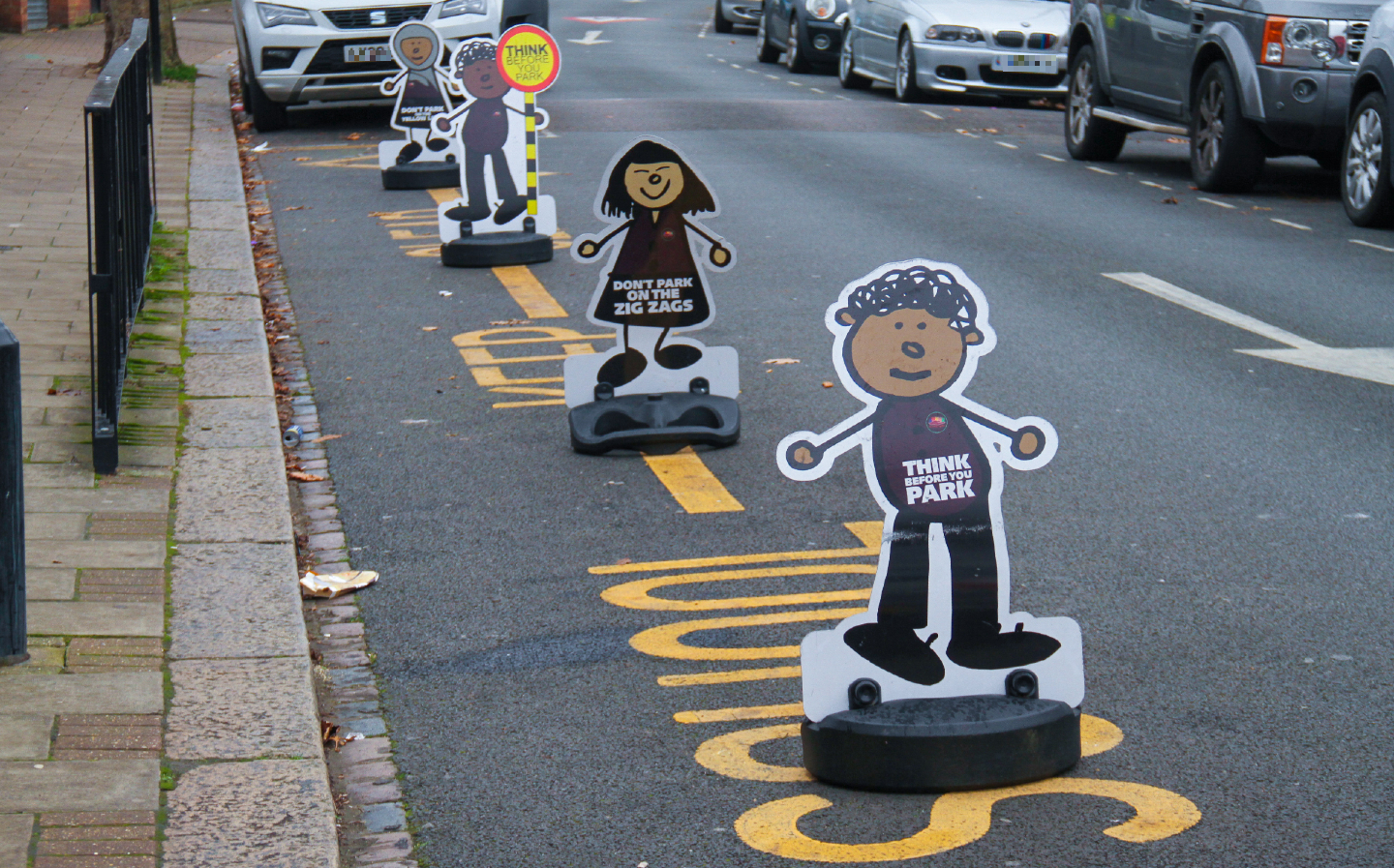Nearly half of primary school parents concerned over parking on yellow zig zags
'A significant hazard for parents and children trying to cross the road safely'
Drivers across the UK are regularly parking illegally on yellow zig-zag lines outside schools during the school run, and nearly half of parents are concerned for their children’s safety as a result.
Insurance firm Churchill, which conducted the study, called on those parking “selfishly” to stop, saying the practice “poses a huge risk to children and parents”.
Many schools around the UK have yellow zig-zag lines outside, often with the words “school keep clear” in the middle. Parking on these marked areas is illegal, and could be punishable by a fine of up to £100.
However, researchers working for Churchill monitored primary schools in Cardiff, London, Manchester, Birmingham and Edinburgh, and found drivers flaunting the rules in every case.
Outside a primary school in Edinburgh with 484 pupils, 40 vehicles were observed parking on zig-zag and double-yellow lines outside during the school run in a single day.
The research found drivers stopped on the yellow lines for an average of just under five minutes, causing what Churchill called “a significant hazard for parents and children trying to cross the road safely.” At the schools studied in Cardiff and London, meanwhile, drivers were found to be parking illegally for an average of more than six minutes.
| Location | Average parking time during the morning and afternoon rush |
|---|---|
| Cardiff | Six minutes five seconds |
| London | Six minutes four seconds |
| Manchester | Five minutes three seconds |
| Birmingham | Four minutes 42 seconds |
| Edinburgh | Three minutes 39 seconds |
Churchill’s research also included a survey of more than 500 parents of children of primary school age, which found more than two-thirds (68 per cent) of those whose child attends a school with yellow zig-zag lines have seen other parents parking or stopping in these areas.
Four in 10 (43 per cent) of those said they were concerned the practice would put children at risk, while two-thirds (65 per cent) said it was “annoying.”
However, the study also suggested a lack of alternative parking may be to blame for the issue, with only 38 per cent of parents saying their child’s primary school has enough parking provision for those doing the school run. A further 30 per cent said they thought their child’s school could improve provisions for parents dropping off or collecting their children.
“Parking on zig-zag and double yellow lines outside schools poses a huge risk to children and parents,” said Nicholas Mantel, head of Churchill motor insurance. “While it may be tempting to stop for a short period to drop off your own children if parking spaces aren’t immediately available, these drivers are selfishly blocking vital sight lines to help people cross the road safely.”
What are the rules on parking outside schools?
Rule 191 of the Highway Code says: “You MUST NOT park on a crossing or in the area covered by the zig-zag lines”. This includes those painted yellow or ones painted white, which are found at pedestrian crossings. Rules that use “MUST” or “MUST NOT” indicate that this is the law, rather than guidance.

Further, rule 243 dictates where motorists cannot legally park, including on corners, dropped pavements or the brow of a hill. It also tells drivers they must not “stop or park near a school entrance”, except when forced to do so by stationary traffic.
The same applies to anywhere that would prevent access for emergency services, or near a bus stop, tram stop or taxi rank. Some of these restrictions will be made apparent by zig-zag yellow lines in the road, but even when such lines do not exist, parking in these locations remains illegal.
Technically speaking, yellow zig-zag lines need to be paired with a sign (that may also detail their operating hours) to be enforceable. But even where there is no sign, parking on yellow zig-zag lines outside a school would constitute parking near a school entrance, and any driver doing so would therefore fall foul of the law.
Related articles
- After reading that parents are concerned about drivers parking on yellow zig-zag lines outside schools, you might like to read about what the Highway Code says in more detail.
- Air quality near schools that ban cars improved by a quarter
- Drivers may be hit with £40 penalty for leaving their cars idling to defrost windscreens
Latest articles
- Aston Martin Valkyrie AMR-LMH hypercar hits track ahead of 2025 Le Mans challenge
- Porsche has begun testing the electric Cayenne
- Cupra Leon 272 eHybrid 2024 review: Bigger battery, better tech … but is it a Cupra?
- Porsche 911 GTS 2024 review: Hybrid heresy or more Stuttgart genius?
- Extended test: 2023 Vauxhall Astra Sports Tourer GS PHEV
- Ford Capri revival has faced a lot of flak… but are buyers put off? Here’s what visitors to the Festival of Speed had to say
- F1 2024 calendar and race reports: What time the next grand prix starts and what happened in the previous rounds
- ‘No timeframe’ for how long Volvo’s returning estate cars will be on sale in UK
- Kia Picanto 2024 review: Updates add spice to cute Korean city car














